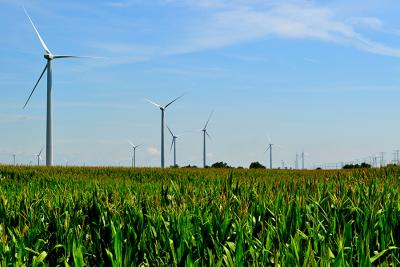Pathways to More Resilient Power Systems
Climate impacts on thermal and renewable electricity supply, demand, and infrastructure—from raised temperatures to altered wind patterns to extreme events—threaten grid performance and resilience. To assess this year-round threat, researchers evaluate how projected future climate could affect annual power production and demand in the central U.S. under a range of scenarios of how the power sector might evolve through midcentury; for each scenario, sub-region and power-system component, they determine a “potential supply gap” due to these climate-driven effects that measures the combination of climate-driven supply losses and demand increases as a percentage of the electricity generation projected in the absence of climate considerations.
This study highlights key factors that impact electric power system resilience and performance, and provides decision-makers with a first step toward incorporating climate risk in power grid design and management. By estimating the compounding effects of climate change on the electricity system, the potential supply gap metric can alert decision-makers to potential challenges from changing climate and how different power sector evolutions vary in terms of vulnerability.
A new study by researchers at the MIT Joint Program on the Science and Policy of Global Change examines the potential impact of climate change on the resilience of the power system in the central U.S., comprised of states that encompass the Mississippi River Basin. In this region, thermal power generation systems (coal, gas, and nuclear) are the primary sources of electricity (68% in 2020), with renewables (wind, solar, and hydropower) gaining ground. Applying a multi-sector dynamics perspective in assessing four electricity sector scenarios, the researchers find that potential annual supply gaps (the combination of climate-driven supply losses and demand increases as a percentage of the electricity generation projected in the absence of climate considerations) range from 5% in one sub-region under mild changes in climate, to 21% in another sub-region under more severe climate change (and larger climate impacts on energy demand and thermal power generation). The study shows that the size of a potential supply gap depends more on increases in electricity demand than stresses on power generation, with greater resilience when the share of renewable power is higher. Further work is needed to quantify the effects of shorter-term extreme events, particularly extreme heat in summer months during which high electricity demand combined with compounding supply shocks in several power generation technologies can potentially cause a “perfect storm” leading to power system failures.

